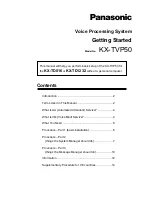
Page 24
APPENDIX III
MEMORY EFFECT and CONDITIONING
Nickel Cadmium (NiCd) and Nickel Metal Hydride (NiMH) batteries
may lose part of their operating capacity over time. This loss usually
occurs when the battery is on trickle charge for long periods or the
battery is seldom fully discharged. Loss of capacity can be prevented
or corrected by periodically discharging the battery to a lower than
normal level and recharging it. This is called ‘Conditioning’ the battery.
This loss of capacity is called “Memory Effect”. What causes it, how to
correct it and even if it occurs at all have been extensively discussed
and written about. Several years ago the term “Memory Effect” had to
be explained to most computer users. Since then, cellular telephones
and video cameras have exposed most people to this type of power
loss and it is rare to find some one who has not experienced it or at
least knows of it. Memory Effect losses do not occur in Sealed Lead
Acid batteries.
The PowerBook 500 series Intelligent Battery contains Nickel Metal
Hydride cells. NiMH batteries were originally thought to have no
memory effect problems under any conditions. Field experience has
proven that NiMH batteries do have the problem but perhaps not as
often as NiCd batteries.
External Battery Conditioning remains important to PowerBook users,
even though the 500 series has limited conditioning abilities. Users
with only one battery will not be able to fully condition that battery due
to minimum voltage limitations of the 500 series computer. Users with
two or more batteries must remember to swap them periodically in the
right sequence to accomplish full conditioning (or calibration). Without
full conditioning on a periodic basis, any PowerBook 500 series user
can expect memory effect power losses.
Lind Electronic Design recommends calibration and conditioning
several times a month for each battery. This process will ensure peak
performance of Intelligent Batteries.




































